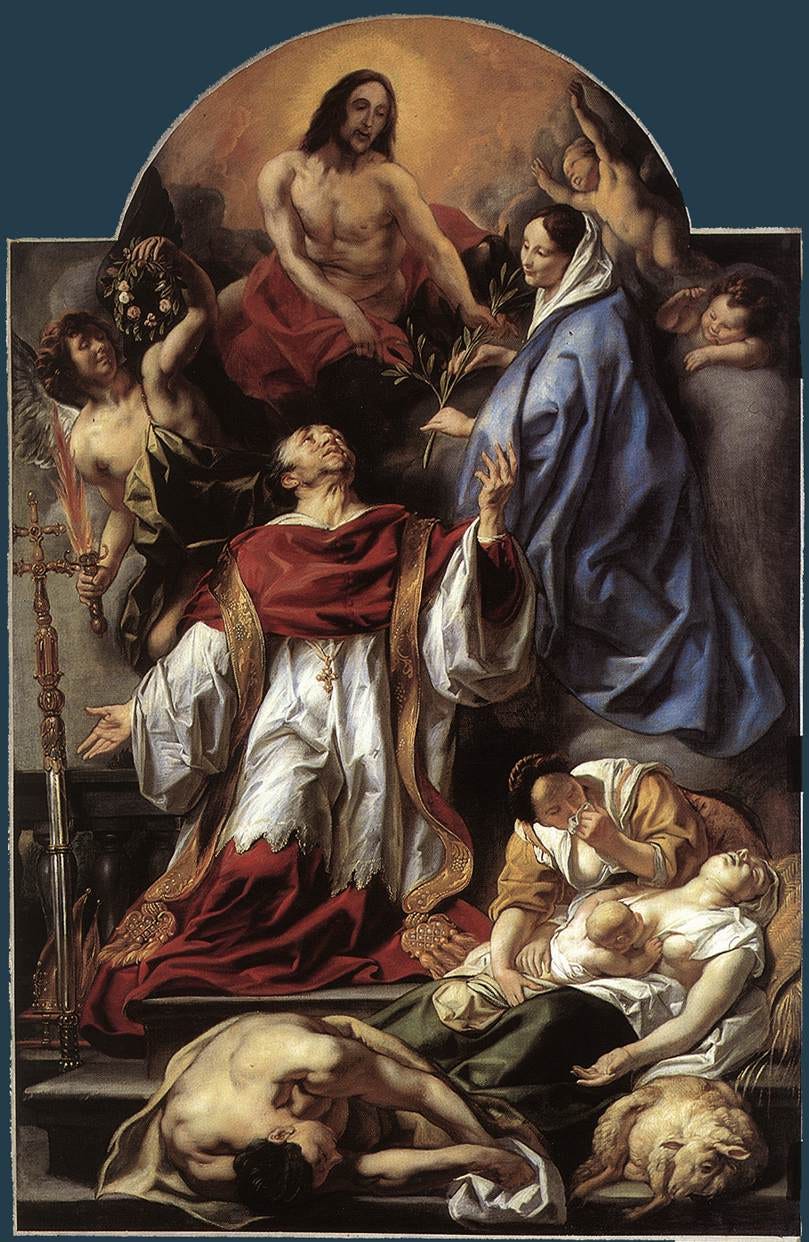Inside the Catholic State
The world that created Caravaggio
Earlier this week I posted about Caravaggio, one of the finest artists of all time and the subject of the first Canon Club podcast. Religion is at the heart of his work, and a central theme in Andrew Graham-Dixon’s biography of the Italian master is the background of religious violence, and the Catholic response to the twin threats of Protestantism and Islam.
Caravaggio, born Michelangelo Merisi and named after the archangel, came into the world in 1571 just two weeks before the Battle of Lepanto, a great naval clash in which the Catholic League had defeated the Turks, leading to rejoicing across Christendom, even begrudgingly from Protestants. Scotland’s King James VI wrote an epic poem to celebrate the great Catholic victory, ‘though he felt compelled to add a prefatory disclaimer that Don Juan of Austria, hero of the verse, should still be regarded as a “foreign papist bastard”’.
(Similarly, Elizabeth I had praised the Catholics after the Siege of Malta six years earlier, writing that ‘If the Turks should prevail against the Isle of Malta, it is uncertain what further peril might follow to the rest of Christendom.’)
The dominant figure from Caravaggio’s early life, a man who influenced his worldview and art, was the rather terrifying figure of Charles (Carlo) Borromeo, ruler of Counter-Reformation Milan.
The Lombard city was now under the control of the Spanish Habsburgs, but crucially lay on the border of Switzerland, and indeed controlled some southern cantons. It was therefore on the frontline not just with Protestantism but the most militant branch in the form of Jean Calvin’s home of Geneva. Calvin, who died in 1564, had turned his city into a model Protestant republic, a place where refugees from Catholic oppression were welcomed – although with conditions.
In this theocratic state the death penalty was regularly handed down for witchcraft, divination, deliberately spreading disease and adultery, both for women and men. These crimes formed the majority of executions in the city, and most of those were burned alive, although adulterous women tended to be drowned in the river. In one case, a girl was beheaded for striking her parents, in line with the Fifth Commandment (it’s a good commandment, although I agree this is somewhat excessive).
Milan, in Graham-Dixon’s words, became a Catholic mirror image of Geneva, one in which Borromeo ruled over 900,000 people as God’s representative on earth.
In 1559 Cardinal Giovanni Angelo Medici - no relation to the famous Florentine dynasty - had become Pope Pius IV. His rule had started with scenes of mob violence as the people of Rome celebrated the death of Paul IV, who John Julius Norwich described as ‘the oldest pope of the sixteenth century and by far the most terrifying. In his intolerance, his bigotry, his refusal to compromise or even to listen to any opinions other than his own, he was a throwback to the Middle Ages.’
When this hated pope died there was violent rejoicing in the city and a mob attacked the Inquisition and released its prisoners. (It was also the not-very-sensible custom in Rome to free criminals whenever a Pope died, which inevitably led to crime waves, although I hear that some badly-run states today continue this practice.)
Keep reading with a 7-day free trial
Subscribe to Wrong Side of History to keep reading this post and get 7 days of free access to the full post archives.


